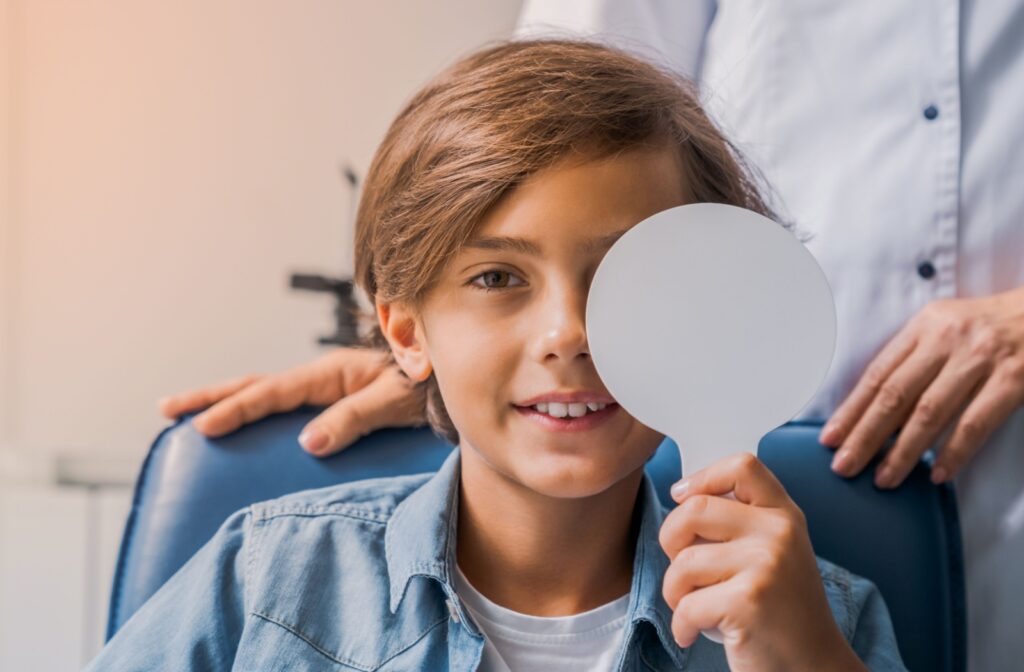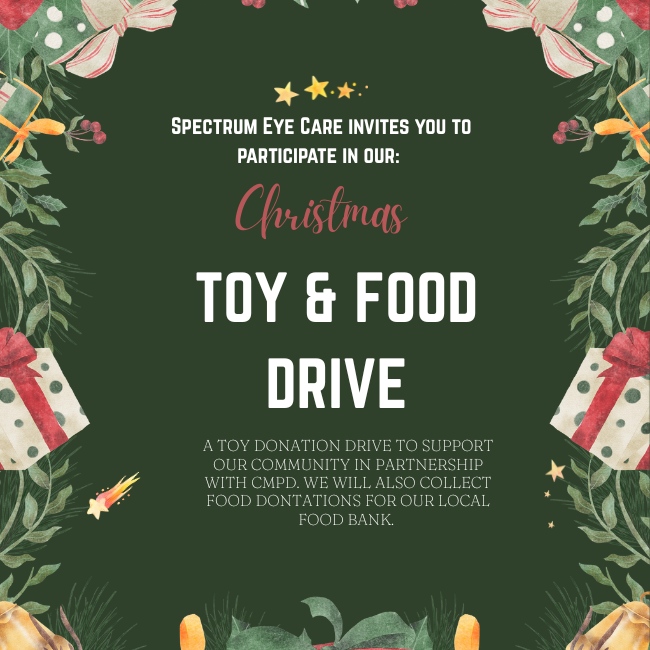You may have heard the term myopia, or nearsightedness, and wonder what it means for your child’s vision. It’s a common condition where close-up objects look clear, but things farther away appear blurry. Regular children’s eye exams are the first step in identifying and addressing this issue. We can help you understand how it works and what you can do to support your child’s eye health.
Many parents ask if there’s anything we can do to reverse their child’s nearsightedness. While myopia cannot be reversed due to the eye’s physical shape, we have effective ways to help manage its progression in children. Our philosophy at Spectrum Eye Care is simple—to do everything we can to support your vision health today and in all the years ahead.
Understand Myopia & Its Progression
Signs of Nearsightedness
Sometimes, children don’t realize their vision is blurry because it’s all they’ve ever known. You might notice some signs that suggest they are having trouble with distant vision. Keep an eye out for these common behaviours.
- Squint to see the board at school or the television
- Move closer to screens or books
- Complain of headaches or tired eyes
- Rub their eyes frequently
How Myopia Affects the Eye
Myopia happens when the eyeball grows a little too long from front to back. This shape causes light to focus in front of the retina instead of directly on it. This is why distant objects look out of focus.
During childhood and teenage years, the eye is still growing. For this reason, a child’s prescription may change as they get older. This progression is an expected part of development, but there are ways we can help manage it.
The Goal of Myopia Control
Since we can’t change the eye’s length, our focus shifts to something just as important. We aim to slow down its progression as much as possible. This is what we call myopia management or myopia control.
The goal of myopia management kids is to slow the elongation of the eye. By managing this progression during the growing years, we can help reduce the amount of prescription change over time. This approach supports your child’s vision health now and for the future.
Modern Options for Myopia Management
Specialized Contact Lenses
Certain multifocal soft contact lenses are designed specifically for children with myopia. They have different zones of power that help focus light correctly on the retina. This can signal the eye to slow its growth.
Atropine Eye Drops
We can use a very low dose of a medicated eye drop called atropine. When used daily, these drops help relax the eye’s focusing mechanism. Studies show that low-concentration atropine drops can help reduce the progression of myopia in many children.
Orthokeratology (Ortho-K)
Ortho-K involves custom-fit lenses that your child wears overnight while they sleep. These lenses gently and temporarily reshape the front surface of the eye—the cornea. Your child can then remove them in the morning and may see clearly all day without glasses or daytime contacts. This process requires a specialized contact lens fitting to ensure safety and effectiveness.

The Role of Regular Eye Exams
A Foundation for Healthy Vision
Everything starts with a complete eye exam. Regular eye exams allow us to get a clear picture of your child’s vision and overall eye health. This is the first and most important step in creating a personalized plan.
Our eye exams use diagnostic technology to provide us with valuable information about your eyes’ health, so we can more easily detect changes in the future. These regular check-ups help us track any changes to their prescription. We can then adjust their myopia management plan as needed to support their vision as they grow.
More Than a Prescription Check
An eye exam does more than determine a prescription for glasses or contacts. We carefully check the health of the entire eye, inside and out. In fact, a comprehensive eye exam can detect signs of over 270 different health conditions, making it an important part of overall wellness.
Proper disease diagnosis eye care is part of every comprehensive exam we perform. We check for a wide range of potential issues. This provides peace of mind about your family’s long-term eye health.
Everyday Habits That Support Kids’ Vision
Screen Time & Digital Eye Strain in Children
Children are spending more time than ever on digital devices for both school and play. Extended screen use can lead to tired eyes, headaches, and difficulty focusing — signs of digital eye strain. While this doesn’t cause myopia directly, it can make existing vision problems feel worse and contribute to overall eye fatigue.
A simple way to support your child’s comfort is the 20-20-20 rule: every 20 minutes, have them look at something 20 feet away for 20 seconds. Building regular breaks into their routine gives their eyes a chance to relax.
Outdoor Time & Healthy Vision
Research shows that spending time outdoors can benefit children’s eye health. Natural light and looking at distant objects give the eyes a much-needed break from close-up focus. Aim for at least 1–2 hours of outdoor activity daily to support healthy visual development.
Building Balanced Habits
Encourage good posture, proper lighting, and regular breaks during reading, homework, and screen use. These small adjustments help reduce eye strain and make it easier for kids to stay comfortable while learning or playing.
Everyday Habits for Healthy Vision
While myopia cannot be reversed, it can be managed with the right care. At Spectrum Eye Care, we provide comprehensive children’s eye exams and personalized myopia management plans to support your child’s long-term vision. Book an appointment at one of our offices in South End, Uptown Charlotte, or on Colony Road today to learn how we can help protect your family’s eye health.




